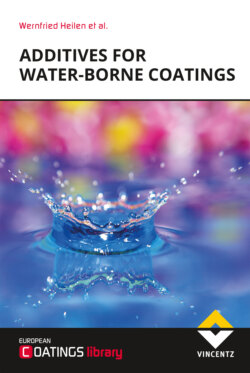Читать книгу Additives for Waterborne Coatings - et al. - Страница 39
На сайте Литреса книга снята с продажи.
2.5.3Rub-out
ОглавлениеThe rub-out test is used to check the stabilisation of pigment particles. It can be used to assess the compatibility of pigment concentrates, the tendency of pigment particles to flocculate or pigment flooding phenomena. An area of the moist but partially dry paint film is rubbed with a finger or a brush. If the pigments have separated or are strongly flocculated, this mechanical procedure of rubbing re-establishes a homogeneous pigment distribution. The viscosity of the dry film will already have increased strongly. The homogeneous distribution of pigment particles is stabilised this way. The colour difference relative to the unrubbed film is an indication of pigment separation or flocculation. The colour difference is usually quoted as the “separation” of the chromaticity ΔE (ΔE is dimensionless). For ΔE less than 0.5, no colour difference is visible. The automotive sector requires ΔE < 0.3. Between 0.5 and 1.0 the colour difference is only slightly visible. For architectural paints, ΔE of < 1.0 is still adequate but ΔE values greater than 1 are not acceptable.
